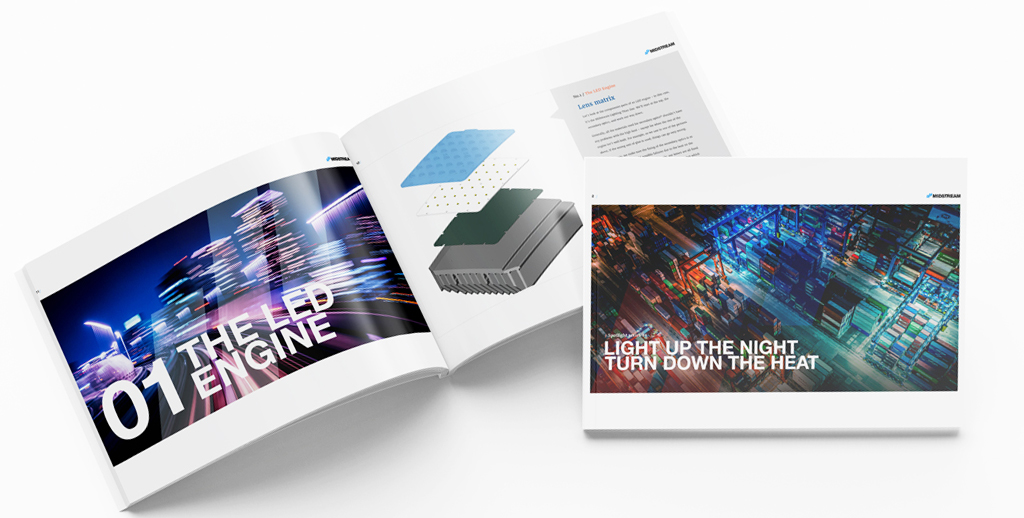Extreme temperatures of any kind can have a debilitating impact on the aviation industry. While aircraft are built to withstand deep cold, for instance, the same isn’t always true of ground operations. Refuelling, repairs, lading, and – ironically – de-icing can all take much longer than they would in more clement conditions.
Sub-zero situations aren’t the only cause for concern, however. High heat can be equally disruptive, particularly in terms of air density; the hotter the weather, the “less” air there is and the harder it is for an aircraft toget the lift it needs for takeoff. While that’s primarily a problem for airports that are subject to extreme heat on a regular basis, it can also be an issue for those with short runways as well.
This being the Midstream blog, it probably won’t come as a surprise that high temperatures have implications in terms of airport lighting, too. Extreme heat can cause lumens to deprecate faster than they should, significant colour shifts to occur, and – in worst-case scenarios – LEDs to fail completely. And without the right protections in place, this can all happen within just a few months.
Over the past decade, we’ve delivered a number of apron lighting solutions to airports around the world, many of them in locations where temperatures regularly exceed what could be considered as “normal”. As a result, we’ve learned a lot about how to mitigate the effects of heat through smart lighting design. Here are five key issues that airport operators need to be sure that their lighting vendor can deliver on.
1. Metal core PCBs are essential
PCBs – or Printed Circuit Boards – are where the LED chips are mounted within a floodlight. PCBs can be made of different materials, and that choice can have a dramatic impact on heat dissipation. Fibreglass (FR4) PCBs, for example, can handle only a fraction of the heat that aluminium equivalents can, for instance. That’s why Midstream uses aluminium or copper in all of its PCBs. If your airport operates in a high-temp area, specifying the need for a metal core PCB in a tender is a crucial first step.
2. Thermal continuity helps to prevent failure
Between the PCB and the heat sink needs to sit what’s known as a “thermal gap interface filler”. This filler connects those units together, and ensures that there aren’t any pockets of air in which heat can build up. This might take the form of a paste, pad, or any other phase changing material, but whatever it is, it needs to up to the task; at Midstream, we use aerospace-grade components for our fillers.
3. Encourage air flow
Away from the PCB, air flow is something to be encouraged. If an LED ends up being completely enclosed, air can’t circulate and the entire purpose of the heat sink is undermined. Here, we focus on designing luminaires that have the greatest number of entry points for air, without compromising the unit’s overall integrity. To do this, we use Ingress Protected (IP) components inside the compartment itself.
4. Paint it white!
Protecting against heat isn’t just about what you do inside the LED. Because white paint reflects sunlight, it can also help to reduce the temperature of a luminaire – by as much as 50°C in some instances. That’s why we use white paint specifically on our LED bodies. Furthermore, we also install solar covers onto our heat sinks. These create a layer between the sun and the heat sink, ensuring that the latter isn’t compromised by solar heat.
5. Test in an accurate environment
In-situ tests can be used to calculate what is known as a TM21 projection. TM21s give manufacturers a clear idea of the lifetime and lumen deprecation of their products, and helps the end user understand the “maintenance factor” – the loss of light that occurs over time. What’s critical here is that any tests are conducted in an environment that reflects the highest possible temperatures, i.e. the middle of the summer.
On the current climate trajectory, extreme heat is only going to become more of an issue as the years go by. In Phoenix, Arizona for instance, temperatures were at or in excess of 110°F on 34 days in 2020 – a new all-time record . That’s a problem, not least because airline operational manuals don’t even include guidance for temperatures above 118° . As this trend continues, airports need to be ready for the impact on infrastructure, as well as fleet.
To find out more about how to ensure that your lighting remains operational in high heat, why not check out download our white paper below discussing the issue? And to learn more about Midstream’s commitment to tackling the cause of extreme conditions, read more about why we’re proud to have signed The Climate Pledge here.

